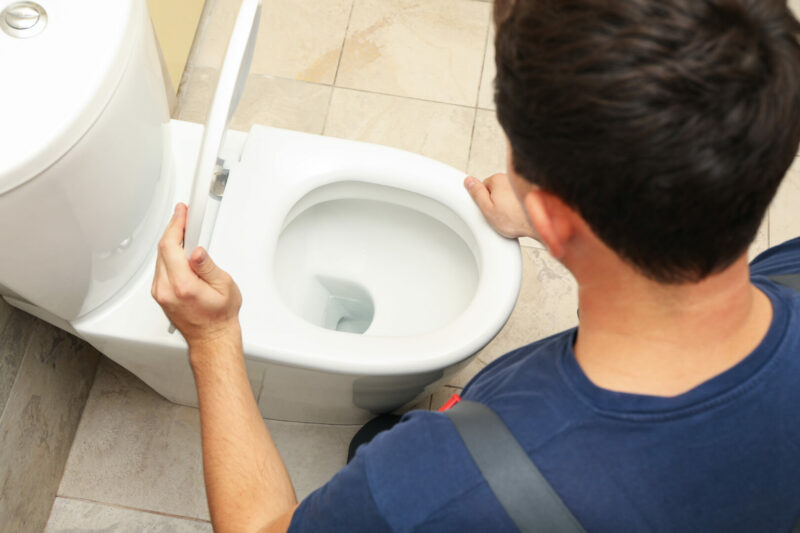Table of Contents Show
One of the great things about traveling in an RV is that you have all the comforts of home with you wherever you go. Having your own toilet is a luxury that many RV owners covet. This is particularly true when going off-grid or to a campground that may have a less-than-acceptable vault toilet.
But just like things break in a sticks-and-bricks home, problems can arise in an RV as well. What do you do when you notice a puddle of water around the base of your toilet? An RV repair shop could troubleshoot and fix the issue, but that tends to be rather expensive. It also can often take a while to get on their schedule.
Luckily, an RV toilet leak isn’t usually a complicated fix. Let us explain how to troubleshoot and fix the leak on your own.
What Would Cause an RV Toilet to Leak?
There are a few different things that may cause an RV toilet leak. Water from any leak is always going to trickle down to the floor, but that doesn’t always mean it’s coming from the bottom of the toilet.
A leak could be coming from a crack in the toilet bowl itself. It could also emanate from the fitting where the water line connects to the toilet or around the point where the flush valve connects to the toilet. Another issue, one of the most common, could be the flange seal at the bottom of the toilet.
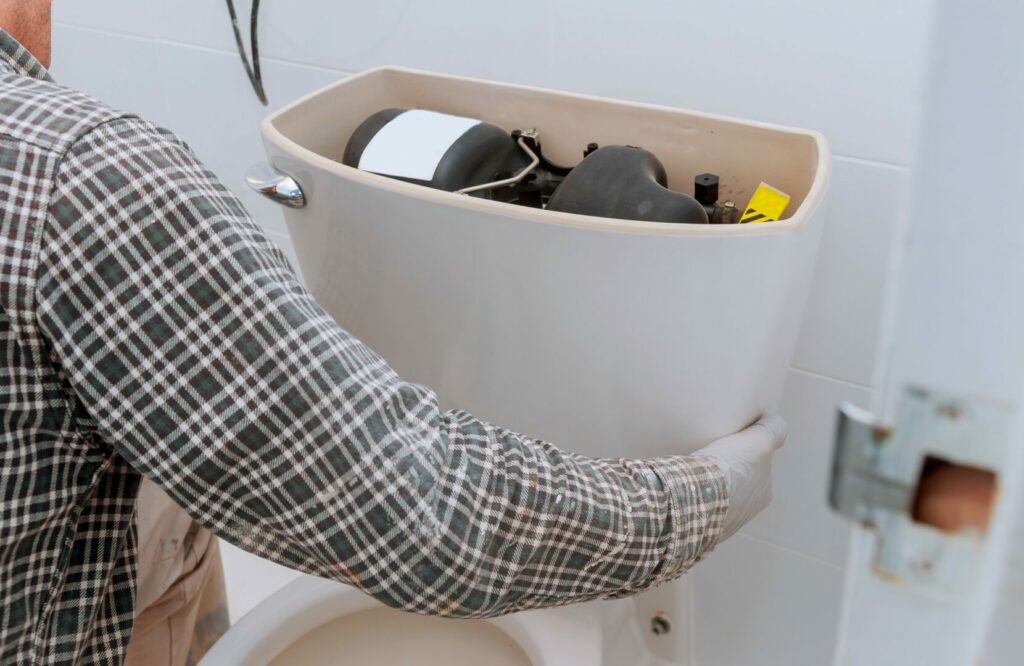
Why Would a Toilet Leak From the Bottom?
A toilet flange seal (also called a closet flange seal) is the rubber or wax seal between the underside of the toilet and the floor flange surrounding the opening to the black tank. When the flange seal gets old or worn, it can leak. This results in water leaking from the bottom of the toilet, where it meets the floor.
How Do I Stop My RV Toilet From Leaking?
Stopping an RV toilet from leaking depends upon where the leak is coming from. A cracked bowl could require replacing the entire toilet. Leaks around fittings could be as simple as tightening them or replacing the Teflon tape on the connector threads.
If the flange seal is the issue, it’s time to replace the seal. The good news is that most RV toilet fixes don’t take special tools, and just about anyone can do them.
Pro Tip: Stink can spread fast in an RV! Keep your RV fresh smelling with these Tips to Stop The Stink in Your RV Toilet.
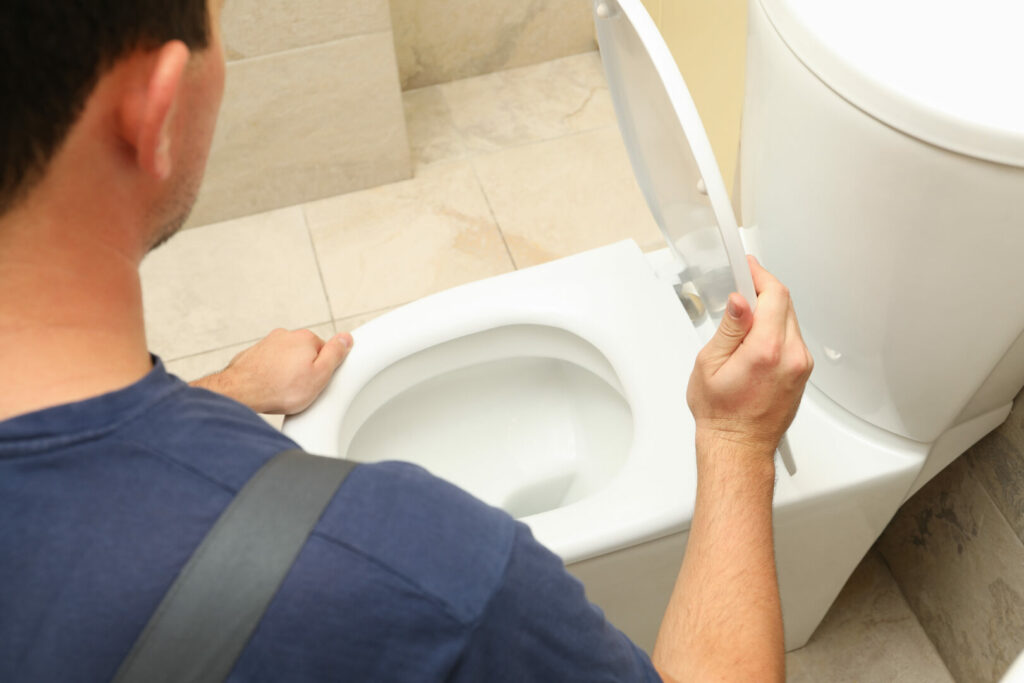
Troubleshooting Your Leaking RV Toilet
Since there are a few different ways that an RV toilet leaks, the first thing you need to do is troubleshoot the leak so you know what to fix.
Check all around the toilet bowl for cracks. Using a hand mirror helps to see behind the toilet, just in case there’s a crack out of your line of sight. If there’s a crack in the bowl, it’s time to replace the toilet.
A mirror can also help when checking the water supply line where it connects to the toilet, as well as the flush valve. If there’s water around the fitting that connects to the toilet, the fix may be as simple as tightening the connection.
If that doesn’t work, turn the water off, flush the toilet, and then disconnect the fittings. Apply new Teflon tape around the threads of the connectors, and reconnect the fittings.
One of the most common culprits is a leak at the bottom of the toilet. Clean up any visible water and then flush the toilet. If water begins seeping out from the bottom of the toilet, you know there’s an issue with the flange seal.
Pro Tip: Ready for a toilet upgrade? We found the Best Composting Toilet for Your RV.
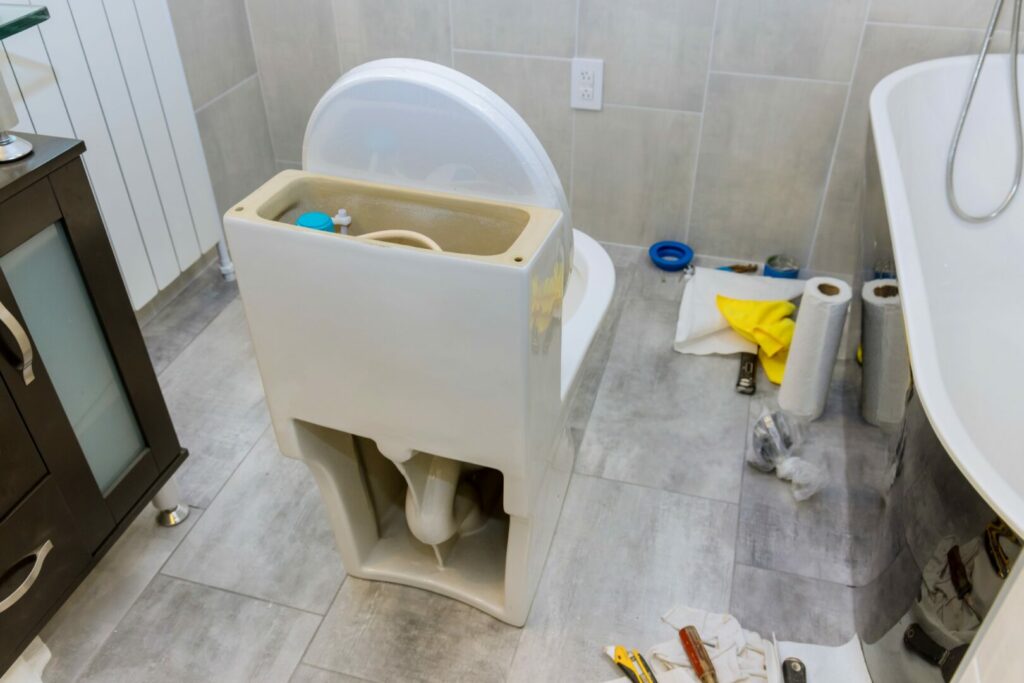
How Do I Fix the Seal on My RV Toilet?
Fixing the seal means replacing it, which you can do in just a few simple steps and with minimal supplies. You need a new seal, a box wrench or socket wrench, a putty knife, old towels, cleaning supplies, and rubber gloves.
First, shut off the water to the leaking RV toilet. If the toilet doesn’t have a dedicated shutoff valve, turn off the water supply line to your RV or the water pump, and then flush the toilet. Once the toilet and water supply line are empty, disconnect the waterline. Keep some old towels handy to sop up any leftover water.
An RV toilet is typically held in place by two or three flange bolts. Use the appropriate size wrench to remove the nuts from the flange bolts, which may be hidden underneath protective caps. Then lift the toilet straight up from the flange bolts and set it aside. It’s good to set the toilet on more old towels or a plastic bag.
Remove the old flange seal, which could be a rubber gasket or a wax seal. If it’s stuck to the floor or the bottom of the toilet, carefully scrape it off with the putty knife. Then clean both the bottom of the toilet and the floor flange and floor, so that the new seal can seat properly. This is also an excellent time to clean the wall behind the toilet.
Center the new flange seal on the floor flange around the black tank opening. Put the toilet back in place over the flange bolts. Once the toilet is back in place, carefully sit on the toilet to form a good seal between the new flange seal, the toilet bottom, and the floor.
Then put the nuts back on the flange bolts. Don’t over-tighten the nuts. They just need to be snug. Overtightening can crack the toilet, which is made of either ceramic or plastic. This will only mean another RV toilet leak down the road.
Put new Teflon tape on the threads of the water supply line connector before reconnecting it. Once the supply line is connected, turn the water back on and flush the toilet a few times to make sure there are no leaks.
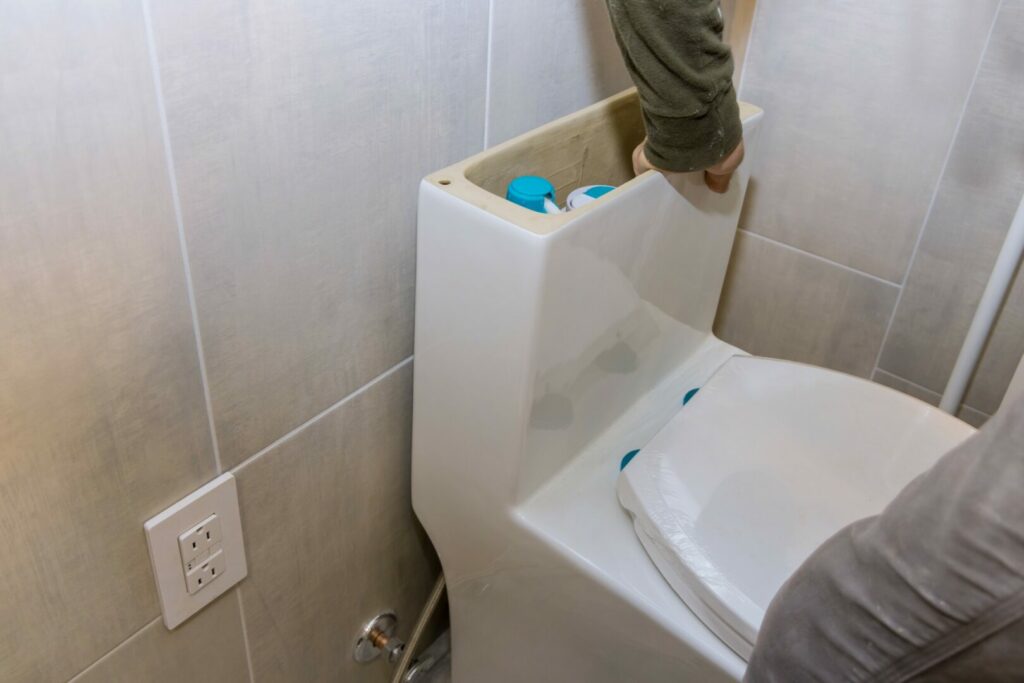
Where Do I Buy Supplies to Fix the Toilet?
Most RV toilets don’t use standard household toilet parts. Typically, you’ll have to go to an RV dealer or order parts online. You can find the most common RV toilet parts, such as the flange seal (or closet flange seal), online.
Is Fixing a Leak on Your Own a Good Idea?
If you’re at all handy, fixing a leaking RV toilet shouldn’t be too hard. And, as you can see, it isn’t all that difficult to troubleshoot the leak. If you follow the steps above, most folks can repair an RV toilet that’s leaking.
This can not only save you money but a lot of time. Finding an RV repair shop or dealership and fitting into their schedule isn’t always easy. Repairing a leaky RV toilet yourself will put money in your pocket and likely get you back out on the road much quicker. Have you ever had to troubleshoot your RV toilet?




